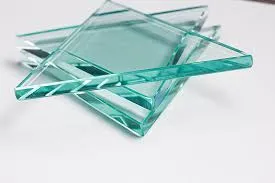The Intriguing World of Acid Glass Composition, Uses, and Innovations
Glass, a quintessential material in modern life, has evolved dramatically over the years with numerous innovations catering to various industrial needs. Among the myriad types of glass, one particularly interesting variant stands out—acid glass. As the name implies, this type of glass is primarily characterized by its ability to withstand acidic environments, making it an essential material in various chemical and industrial applications. In this article, we will delve into the composition, uses, and innovations surrounding acid glass, illuminating its significance in science and everyday life.
Composition of Acid Glass
Acid glass, or borosilicate glass, is composed primarily of silica (SiO2), boron oxide (B2O3), and alumina (Al2O3). The addition of boron not only improves the thermal stability of glass but also enhances its resistance to thermal shock and chemical reactivity. Unlike regular soda-lime glass often found in household items, acid glass can withstand higher temperatures and is less prone to corrosion from aggressive chemicals, particularly acids.
The unique properties of acid glass stem from its specific molar ratios and manufacturing processes. These glasses are often produced using advanced melting techniques, which allow for a more uniform and stable structure. The variance in the composition provides acid glass with a higher resistance to expansion and contraction during temperature changes, making it suitable for laboratory equipment and industrial applications.
Uses in Industry and Labs
Acid glass has found its niche in various industries due to its robust characteristics. One of the most prevalent uses is in laboratory settings. Glassware such as beakers, flasks, and test tubes made from acid glass are commonplace in scientific research laboratories. The glass’s ability to resist acid corrosion means that it can handle strong reagents without deteriorating, ensuring accurate results and maintaining sample integrity.
In the pharmaceutical industry, acid glass is employed in the manufacturing of containers for medicines and chemicals. This ensures that the pharmaceutical products remain uncontaminated and stable, extending their shelf life.
acid glass
Another significant application is in the field of telecommunications and electronics, where acid glass is utilized in the production of optical fibers. The optical fibers must maintain their integrity against various environmental factors, including humidity and temperature changes. Acid glass’ resistance to these factors makes it an ideal choice for optimizing signal quality and durability in communication networks.
Innovations and Future Prospects
As technology advances, the applications of acid glass continue to expand. Researchers are exploring ways to enhance the properties of acid glass further, making it even more versatile. One notable area of innovation is the potential incorporation of nanotechnology into the glass-making process. This could lead to the development of acid glass with self-cleaning properties or enhanced resistance to thermal shock and mechanical stress.
Moreover, sustainability has become a pivotal focus in the manufacturing sector. The production of acid glass could be optimized to minimize waste and utilize recycled materials without compromising quality. This shift toward greener manufacturing practices aligns with global efforts to reduce environmental footprints.
The future of acid glass also indicates a trend toward customization. As industries evolve, there is a growing demand for tailored solutions that address specific challenges. Acid glass can be engineered with specific additives to enhance particular properties, such as improved transparency or added strength, thereby catering to niche applications in aerospace, automotive, and artisanal crafts.
Conclusion
Acid glass symbolizes the intricate relationship between material science and industry. Its ability to withstand corrosive environments while offering thermal stability makes it an invaluable resource across various sectors. As innovations continue to unfold, the potential for acid glass appears limitless. With ongoing research into its composition and applications, acid glass not only holds a firm place in our current industrial landscape but also paves the way for exciting developments that will shape our future. Understanding and leveraging the unique properties of acid glass can lead to stronger, safer, and more efficient technological advancements, highlighting the importance of continually exploring the materials that surround us.
 Afrikaans
Afrikaans  Albanian
Albanian  Amharic
Amharic  Arabic
Arabic  Armenian
Armenian  Azerbaijani
Azerbaijani  Basque
Basque  Belarusian
Belarusian  Bengali
Bengali  Bosnian
Bosnian  Bulgarian
Bulgarian  Catalan
Catalan  Cebuano
Cebuano  Corsican
Corsican  Croatian
Croatian  Czech
Czech  Danish
Danish  Dutch
Dutch  English
English  Esperanto
Esperanto  Estonian
Estonian  Finnish
Finnish  French
French  Frisian
Frisian  Galician
Galician  Georgian
Georgian  German
German  Greek
Greek  Gujarati
Gujarati  Haitian Creole
Haitian Creole  hausa
hausa  hawaiian
hawaiian  Hebrew
Hebrew  Hindi
Hindi  Miao
Miao  Hungarian
Hungarian  Icelandic
Icelandic  igbo
igbo  Indonesian
Indonesian  irish
irish  Italian
Italian  Japanese
Japanese  Javanese
Javanese  Kannada
Kannada  kazakh
kazakh  Khmer
Khmer  Rwandese
Rwandese  Korean
Korean  Kurdish
Kurdish  Kyrgyz
Kyrgyz  Lao
Lao  Latin
Latin  Latvian
Latvian  Lithuanian
Lithuanian  Luxembourgish
Luxembourgish  Macedonian
Macedonian  Malgashi
Malgashi  Malay
Malay  Malayalam
Malayalam  Maltese
Maltese  Maori
Maori  Marathi
Marathi  Mongolian
Mongolian  Myanmar
Myanmar  Nepali
Nepali  Norwegian
Norwegian  Norwegian
Norwegian  Occitan
Occitan  Pashto
Pashto  Persian
Persian  Polish
Polish  Portuguese
Portuguese  Punjabi
Punjabi  Romanian
Romanian  Russian
Russian  Samoan
Samoan  Scottish Gaelic
Scottish Gaelic  Serbian
Serbian  Sesotho
Sesotho  Shona
Shona  Sindhi
Sindhi  Sinhala
Sinhala  Slovak
Slovak  Slovenian
Slovenian  Somali
Somali  Spanish
Spanish  Sundanese
Sundanese  Swahili
Swahili  Swedish
Swedish  Tagalog
Tagalog  Tajik
Tajik  Tamil
Tamil  Tatar
Tatar  Telugu
Telugu  Thai
Thai  Turkish
Turkish  Turkmen
Turkmen  Ukrainian
Ukrainian  Urdu
Urdu  Uighur
Uighur  Uzbek
Uzbek  Vietnamese
Vietnamese  Welsh
Welsh  Bantu
Bantu  Yiddish
Yiddish  Yoruba
Yoruba  Zulu
Zulu 

